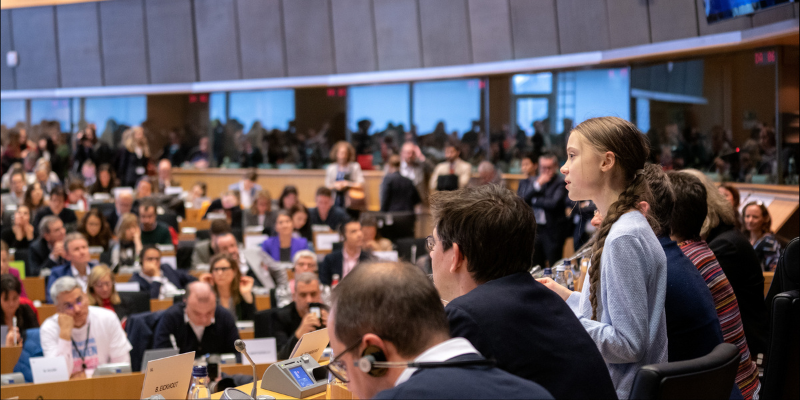
Reimagining leadership for climate action


Current leadership approaches to climate change aren't working, so what's the solution? @CPI_foundation have engaged governments & grassroot activists to capture the human experience of leading in #climatechange.
Share article"Effective leadership in #climateaction transcends singular authority, focusing on power within relationships and understanding the interconnection between self and system." @CPI_foundation
Share articleExplore how @CPI_foundation are unearthing approaches to climate leadership and find out how you can get involved!
Share articleWe put our vision for government into practice through learning partner projects that align with our values and help reimagine government so that it works for everyone.
Global efforts to reduce emissions continue to fall short. The most recent United Nations Environmental Report revealed an expected temperature rise of 2.5℃ - 2.9℃ above pre-industrial levels, far exceeding the 1.5℃ target set by the Paris Agreement. This emphasises the urgent need for adaptation, mitigation, and resilience against rapid climate change.
Addressing climate change requires collective action beyond governments. As consumers, residents, workers, and community members must engage and show leadership in response to the climate emergency. However, more widely accepted guidance on effective leadership is needed in the face of climate uncertainty.
 Greta Thunberg urges MEPs to show climate leadership. (CC-BY-4.0: © European Union 2020 – Source: EP)
Greta Thunberg urges MEPs to show climate leadership. (CC-BY-4.0: © European Union 2020 – Source: EP)
Our experience is that most people in climate leadership roles intuitively know that business as usual isn’t working and a new approach is needed — yet the system they’re working in makes it very difficult to change this. Frequently, leaders don’t have time to examine the underlying assumptions and beliefs about how the system works and how they are leading in that system.
Failure to meet commitments like the ones made in COP21’s Paris Climate Accord illustrates the inadequacy of linear solutions. Climate change is instead characterised by non-linearity and tipping points, making it a complex challenge.
When working in complexity, simple solutions do not capture the multiple shifting factors that will impact the outcomes you are working towards. Relying solely on sector-specific expertise, such as energy or engineering, oversimplifies the issue. Climate change is deeply rooted in existing social systems, belief structures, production methods, and financial models. Complexity-informed approaches to climate change require alternative structures, beliefs, and models that challenge these existing systems and introduce alternative approaches. For example, we’ve seen calls for a systems-based approach to financing climate change, which challenges traditional models that are often siloed, incremental, and measured.
The conventional top-down hierarchical leadership model is unfit for addressing the complexity of climate challenges, hindering adaptability and learning from those directly impacted by climate change. Current leadership approaches to climate change aren't working, so what's the solution?
In response to the gap in climate leadership, CPI has been engaging leaders across government levels and grassroots activism to capture the human experience of leading in climate change.
Our research reveals a critical need for systemic leadership that embraces fluidity, decentralised collaboration, and relational thinking. Effective leadership in climate action transcends singular authority, focusing on power within relationships and understanding the interconnection between self and system.
We have synthesised our findings into five insights that we’ll explore through this blog series to help inspire and refine climate leadership practices:
An emerging leadership paradigm: A new leadership model is evolving, centring systems thinking and relationship dynamics.
Introspection and self-awareness: Effective leaders practise introspection, understanding their role within larger systems and relationships.
The role of storytelling: Storytelling is a crucial skill for effective climate leadership, facilitating communication and engagement.
Mindset shift towards learning: Successful leadership requires a mindset shift to embrace failure, experimentation, and continuous learning.
Addressing funding challenges: Climate leaders navigate funding challenges by creatively "hacking" bureaucracy and forming resilient coalitions.
So, what does this emerging leadership paradigm look like in practice? Based on our conversations with climate leaders, we are observing a shift in the way we talk about and approach leadership practice.
This shift resonates with the increased popularity of systems thinking and complexity-informed decision-making. Recognition of environmental tipping points and degradation is also sparking new leadership practices inspired by nature, emphasising a more holistic approach to managing organisations and relationships. These new approaches believe that change is an unpredictable outcome of dynamic interactions. Leadership is thus an expression of distributed and collective effort, representing the strength of relationships in an ecosystem.
“We live in a dynamic and ever-changing world, so we must be open and flexible to new information and critical thinking. It's difficult to be draconian as you come into any sort of leadership position, so flexibility of mind is required to be a climate leader.” (Angie Fyfe, Executive Director, ICLEI Local Governments for Sustainability USA)
The dominant understanding of management as leadership is no longer fit for purpose, as complex challenges are better addressed through a humble listening approach. Keith Grint states that while certain problems require management-style leadership approaches, such as carbon pricing or climate-disaster emergency relief, climate action calls for alternative leadership practices that focus on our position in the system.
.png)
“Leadership exists when people are no longer victims of circumstances but participate in creating new circumstances.” (Jaworski 1996)
This shift is supported by a change in mindset, noticing the interrelatedness and complexity of our societies and organisations. When we see the world as a series of relationships rather than things, our model of what is possible and who can make it happen starts to shift, enabling individuals’ agency to shape their relationships.
Through our research, it became clear that effective leadership is about building trust and nurturing relationships.
We heard about one leader’s experience of taking their team outside of their City Hall office to do activities like hiking and paddle boarding. They felt this provided the team with the time needed to bond as humans and build trust, which then enabled the work to progress further.
This illustrates the importance of connecting with collaborators as people and leaning into the power of relationships to bring out the best in people.
This is easier said than done. According to one leader: “There are invisible blockers that make us unable to lean into collaboration. There is currently a very transactional nature of relationships. Instead, they sought to tap into the commonality of the challenge. “How do we shift this to talk about common visions and working towards a common vision … this requires a mindset change”. This resonated with what we heard from other interviewees.
“Being a climate leader for us is a lot about enabling guiding visions and to help navigate complex change. When talking about climate change, to move forward requires deeply plural practices that requires intuitive leadership, having an appetite to live with complexity and holding multiple perspectives at the same time.” (Anab Jain, Superflux)
Through insightful conversations with leaders, it has become evident that a new leadership paradigm in climate action is needed. We have heard about how the complexity of climate change challenges hierarchical management and instead requires leaders with new mindsets and skill sets. This emerging approach to climate leadership centres fluid collaboration, relational thinking, and understanding the interconnectedness of the self and the system. In order to work with the dynamic and complex nature of climate change, this proposed leadership paradigm encourages leaders to navigate complexity through humility, flexibility, and relationships.
In our next blog, we will explore some of the introspection and self-awareness practices of leaders in the climate space and discuss how to build an effective leadership practice that centres these mindsets.
In the meantime, here's a reading list if you'd like to unpack some of the concepts in this blog:
“Regenerative Leadership” [book] by Giles Hutchins and Laura Storm
“Think like a tree” [book] by Sarah Spencer
“The Inner Path of Leadership” [book] by Joe Jaworski, summarised by Peter Senge here.
“The climate crisis is a leadership crisis” [blog] by Katharine Wilkinson
“Difficult conversations spark new perspectives on climate action” [strategy] by Climate KIC
“Shifting Horizons for regenerative futures” [blog series, substack] by Minou Schillings
Receive updates on the latest research findings and opportunities to get involved.





